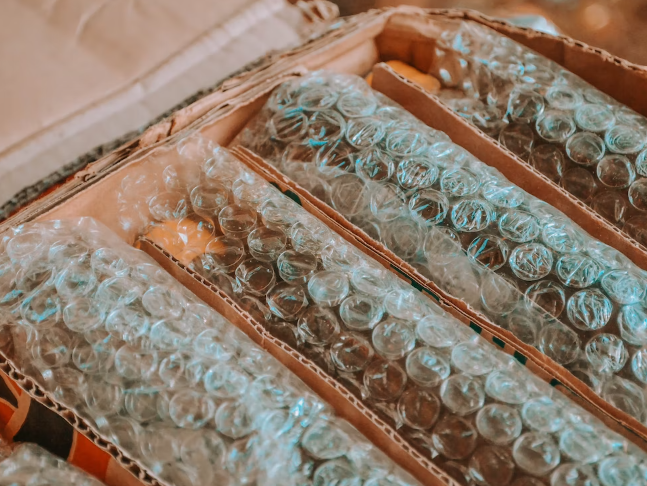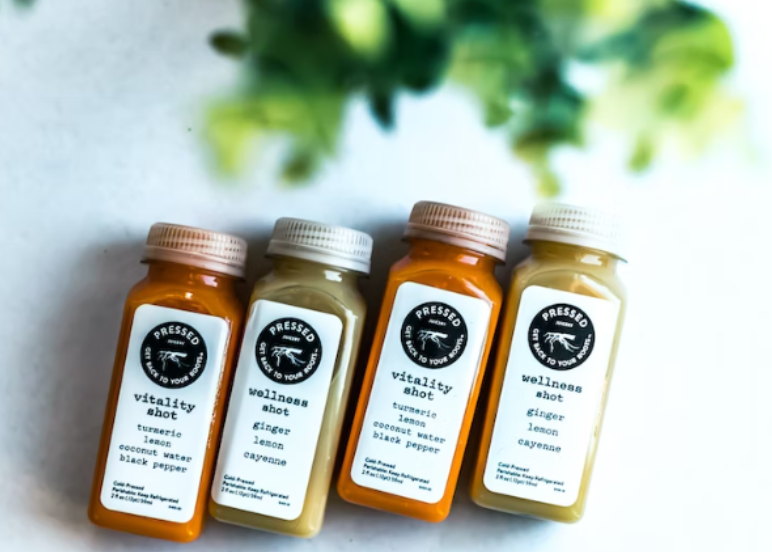Introduction
Flexible packaging has been gaining market share from rigid plastic because of advances in technology, lower costs due to decreased use of materials, and the expanding economy which drives businesses towards more flexible alternatives when they are looking for ways sale their products.
A shift within trends as well as valuable information about how this type of product works can help make it affordable among other things.
Flexible packaging can be anything from paper and plastic to film, foil, or even a combination of all three!
These versatile containers are perfect for storing your product safely.
In this blog, we will detail:
- Flexible packaging definition
- The quality and safety of flexible packaging materials
- What is flexible packaging quality control?
- What is a Packaging Quality Control Checklist?
- Crucial Checkpoints of packaging quality control
Common Industry Terms and Definitions:
- Blister Packaging: Blister packaging contains the product between a formed dome and a flexible surface or paperboard.
- Fitment: A fitment is a device that attaches to a container to provide a specific function to the product, such as dispensing a liquid or foam. For example, a fitment might be attached to a liquid cleaner container.
- Four-Side Seal Pouch: Pouches with seals along all four edges. The flat sheets of the pouch can come from a single stock or different stocks for the front and back.
- Good Manufacturing Practice (GMP): GMP is a process by which the product is manufactured in such a way that any risk to the consumer has been minimized. Some GMP processes are guided by federal and state regulations, while others are considered best practice principles.
- Gusset: A gusset is a fold on the bottom or side of a pouch, which expands the bag when the contents are inserted.
- Hermetic Seal: A hermetic seal is a flexible packaging term that refers to material that is impervious to fluids or gases and/or is airtight under normal circumstances.
- Lap Seal: Created with two layers of film that overlap each other, a lap seal uses less material than other seals, which makes a lap seal a better eco-friendly alternative in flexible packaging.
- Light Resistance: When a material can withstand exposure to light without changing the chemical properties, physical properties, or color, it is considered light resistant.
- Pouch: Pouches are defined as small bags consisting of two flat sheets that seal along the edges.
- Pillow Pouch: A pillow pouch is a pouch or bag that looks like a tube with a seal at both ends.
- Stand-Up Pouch: A stand-up pouch with a wide base to allow the pouch to stand up without tipping over.
- Three-Side Seal Pouch: A three-sided pouch has three sealed sides with an open side, often with a seal.

The quality and safety of flexible packaging materials
The food contact materials (FCMs) industry is a broad and complex area, with many different types of materials used in packaging as well as any chemical substances such as additives that may be present.
The intent behind this type of packing was to protect the integrity, quality, or freshness of foods during production until they reached your store shelves.
The variety of plastic packaging materials available today means there’s an almost infinite number of combinations you can create with them.
The simplest structures may only have one or two layers, but more complicated ones could be up to eight different types deep.
The Food and Drug Administration has approved the use of polymers in food packaging, which is causing plastics to take over many areas traditionally held by metals or glass. Many additives are added during production that gives properties such as anti-oxidants;
however, these materials can also have negative side effects like toxic chemicals when ingested over time.
In some cases, there may be an increased risk for cancer due to particularly high exposure levels through eating affected products like hot coffee cups filled with liquid Plasticizers help make sure oils don't separate out too quickly while keeping foods fresh and looking longer than untreated styles but they do come at a cost.
Package integrity testing is an important measure of the package’s barrier material and seal. The test determines if a leak in any one area will affect other parts or cause wholesale escape from your product's containment.
In addition to checking for cracks, large holes can also be found during this type of inspection which shows how much pressure different areas sustain when exposed directly against each other without protection like double-layer foil around certain susceptible items such as electronics where moisture intrusion must always remain prevented at all costs!
If you're not paying attention, it's easy for pouches during processing and post-process to get handled incorrectly.
This can result in physical damage that weakens or compromises the seal--which could weaken the seal or compromise the pouch hermeticity!

What is flexible packaging quality control?
- Packaging quality control is a process that helps manufacturers and businesses ensure their products are packaged properly and meet consumer expectations. By using packaging quality control, businesses can avoid product recalls, damaged merchandise, and unhappy customers.
- The inspection of finished product packaging is a crucial step in ensuring quality control and safety for any given supply chain.
- This includes looking at it before approval, during storage once received from production line workers, or even while on transport! It's important that every stage passes smoothly so you can avoid costly mistakes.
- In this blog post, we'll discuss what packaging quality control is and how you can use it to improve your business.
- Quality control for packaging involves a number of different tests and procedures to ensure that packaging meets all the necessary requirements. These requirements can vary depending on the type of packaging but include strength and durability, as well as precise dimensions.
-
The purpose of QC
- In some cases, packaging quality control may also involve testing for environmental factors such as moisture or heat resistance.
- The goal of packaging quality control is to ensure that packaging can withstand the rigors of shipping and storage and that it will protect the contents from damage.
- By ensuring that packaging meets all the necessary standards, quality control helps to ensure that products arrive at their destination in perfect condition.

What is a Packaging Quality Control Checklist?
If you're a supplier, manufacturer, or packager of packaged goods then it's important to have an effective checklist in place that can help with the quality assurance process.
Mobile packaging checklists are easy for employees who work on-site at your plant as well as provide peace of mind in knowing what steps need to be taken if something does go wrong during production so there aren't any costly losses incurred from unsafe products being distributed into markets - this includes recalling them too!
A packaging quality control checklist is a tool used by packaging professionals to ensure that packaging meets all quality requirements.
The checklist can be used to verify the packaging material, design, production, and packaging process.
It can also be used to check the packaging for defects and damage.
A packaging quality control checklist can help to improve the quality of packaging and reduce the risk of recalls and customer complaints. By using a checklist, packaging professionals can ensure that their products meet all quality standards and are safe for consumers.
Quality control personnel use the packaging quality control list to determine whether the finished packaging meets the quality requirements.
- Use this list to:
- Record whether the packaging products meet the accepted standards, need to be shelved or need to rework.
- Defects are classified as key, primary, or secondary defects to address quality problems through appropriate action schemes.
- Add photo or video evidence to achieve advanced check visibility.
- Prioritize quality issues and measures based on severity.
- Customize your services according to your business needs.
What is the Impact?
The impact of packaging quality control audits can be felt throughout the supply chain.
Suppliers are at risk for distributing products with incomplete shipping markings, and manufacturers could end up using the wrong materials during production because they were unaware there were poor packing practices like incorrect assortment or missing cushioning material which incurs avoidable damages to the finished product.
It is crucial that packagers work closely alongside traders in order to ensure high-quality boxes making sure no expense goes wasted when it comes to protecting your inventory from potential loss due to improper handling after delivery.

Crucial Checkpoints of packaging quality control
The importance of packaging quality control can't be understated. It is the first step in ensuring your products are safe and complete, which will help you maintain customer loyalty as well!
Don’t forget about these key points during production - they're vital for keeping both supplier satisfaction levels high while also protecting against any potential legal issues at home or abroad:
- When you receive products or packaging components from manufacturers,
- Make sure that they're only containing the raw materials needed for production. Packaging companies also need to verify if these items have been properly packed will help prevent waste and delays in shipping!
- After manufacturing or packing products,
- Individual units start undergoing quality assurance as soon they enter the production line.
- Performing packaging for each finished product helps maintain high standards observed during both phases of assembly--from when it was manufactured to when you inspected them at home before storing them away safely!
- At any point during the process,
- it's important to keep an eye on your products and make sure they're still in good condition. One way of doing this is with regular inspections for faulty or deteriorating packaging integrity, especially when moving them across pallet racks using forklifts or other lifting equipment.
- After packing products for transport,
- Additional packaging might be required by the courier or logistics team to prevent damage in transit and ensure safe delivery. Quality control can also take place through free-fall drop testing which entails intentionally dropping packages on corners edges surfaces simulate realistic conditions encountered during shipment
- This process helps avoid potential problems before they arise so you don't have any worries when your product arrives!

Conclusion
Quality control is an important part of any business, but it's especially important in the packaging industry.
That's why ecopackers has such a great quality control system.
By working with us, you can be sure that your products will be packaged correctly and securely. So if you're looking for a packaging partner who can provide quality control, look no further than ecopackers. We're the one-stop shop for all your flexible packaging needs.
